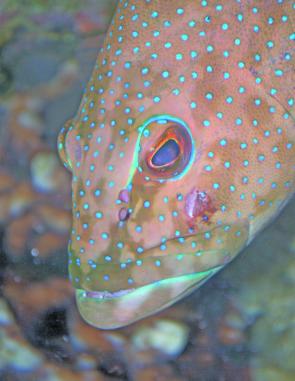Although the fishing for iconic species such as barramundi and mangrove jack can be a little difficult in August, this is the time of year to relish the clear, clean currents pulsing through the many waterways around Cape York.
Getting a tasty feed this time of year is often best procured with the use of live and dead baits over deeper reef and holes or structure in estuaries.
Early mornings as a light mist picks up off the water’s surface and conditions are calm, fish of all sorts can be seen with dorsal fins waving gently in the current of an incoming tide. Casting my mind back through the Augusts of previous years, the sight of tarpon, milkfish and queenfish swimming just under the surface in clear water are the images that remain strongest. These species will all move around between the estuaries and coastline at different times of year, however in August, many will congregate in the creeks and rivers.
Although not the best to eat, tarpon of the tropical north grow to a decent length (about 55cm) and girth and are brilliant fun to catch. They willingly rise to eat surface lures just as they will snap up sinking soft plastics. They love feeding on small garfish in the lights of boats at night and are most active around sunrise and sunset, often feeding on the surface during these times.
Tarpon can be particularly hard to hook and this is only compensated for by their eagerness to have another crack at something moving away from them. For those fishing flies and soft plastics, you will feel repeated strikes and misses and it takes direct contact with the line to hook them. Keep your rod tip low and don’t give them any slack.
If the tarpon were eager in the morning, it is a sure bet there will be some queenfish feeding at the opposite end of the day. Look for boils and splashes and sometimes the forked tail of these fish as they patrol around long pools as the sun sets.
Large queenies will smash poppers in the long pools and adjoining sand flats this time of year and trolling around poppers 20-30m behind the boat is a good way of tracking them down.
Try and keep your popper skipping along the surface with your rod tip very low and continue an erratic, blooping retrieve all the way back to the boat. Nothing gets the heart racing like a huge queenfish smashing a surface offering right at your feet and nothing can prepare you for the shock.
Milkfish and big sea-run mullet can often be found moving over shallow flats in many Cape York rivers when conditions clear up. Neither of these fish usually makes it onto the catch lists or the dinner plates of most anglers.
But they are popular targets for the Aboriginal people who value these fish for their silvery bulk and habit of moving over shallow clear flats, making them ideal targets for a spear. Milkfish can occasionally be fooled by small weed imitation flies and doubtless mullet will fall to similar techniques.
August will also see the full run of various mackerel, tuna and trevally species around the reefs and rocky patches right up and down the Cape. Due to the prevailing winds this time of year, the sheltered bays of the east coast and inshore rocky patches along the west coast are good areas to hunt for these line-stretching, reel-burning speedsters.
Reads: 1507
August can see some crystal clear conditions.

Coral trout are just one of the many spectacular species that dwell on the Great Barrier Reef.

Tanker heads across a calm August horizon.




